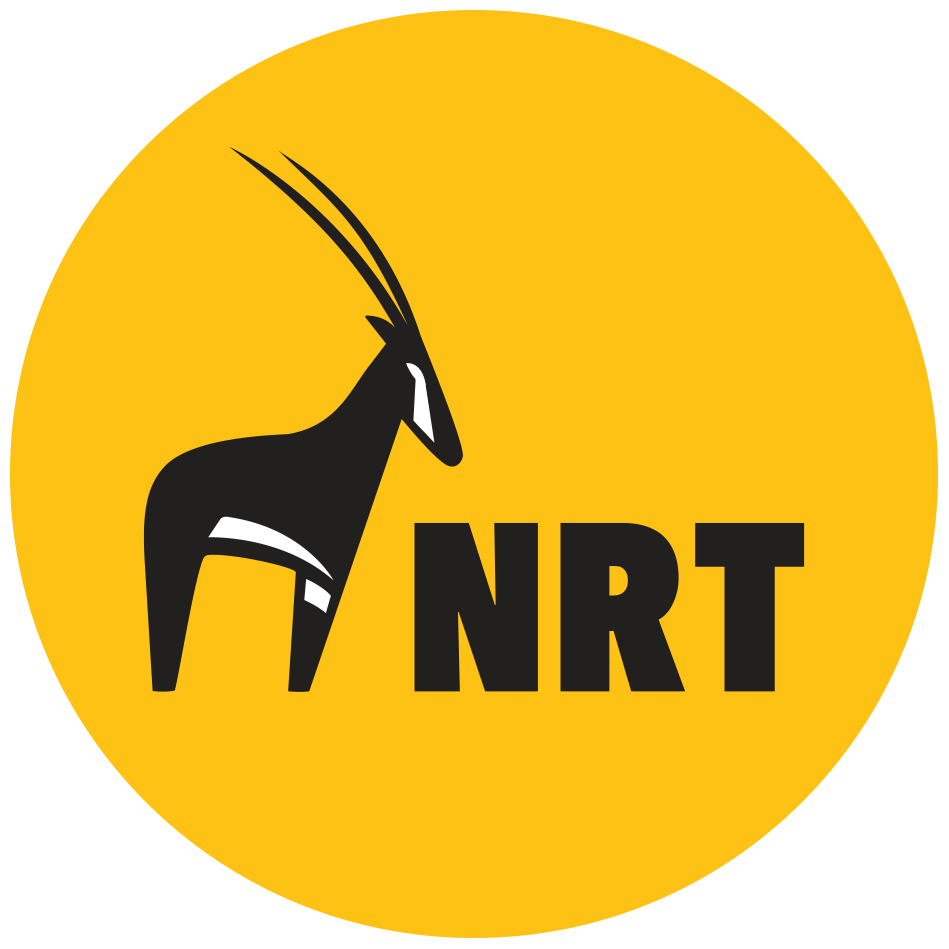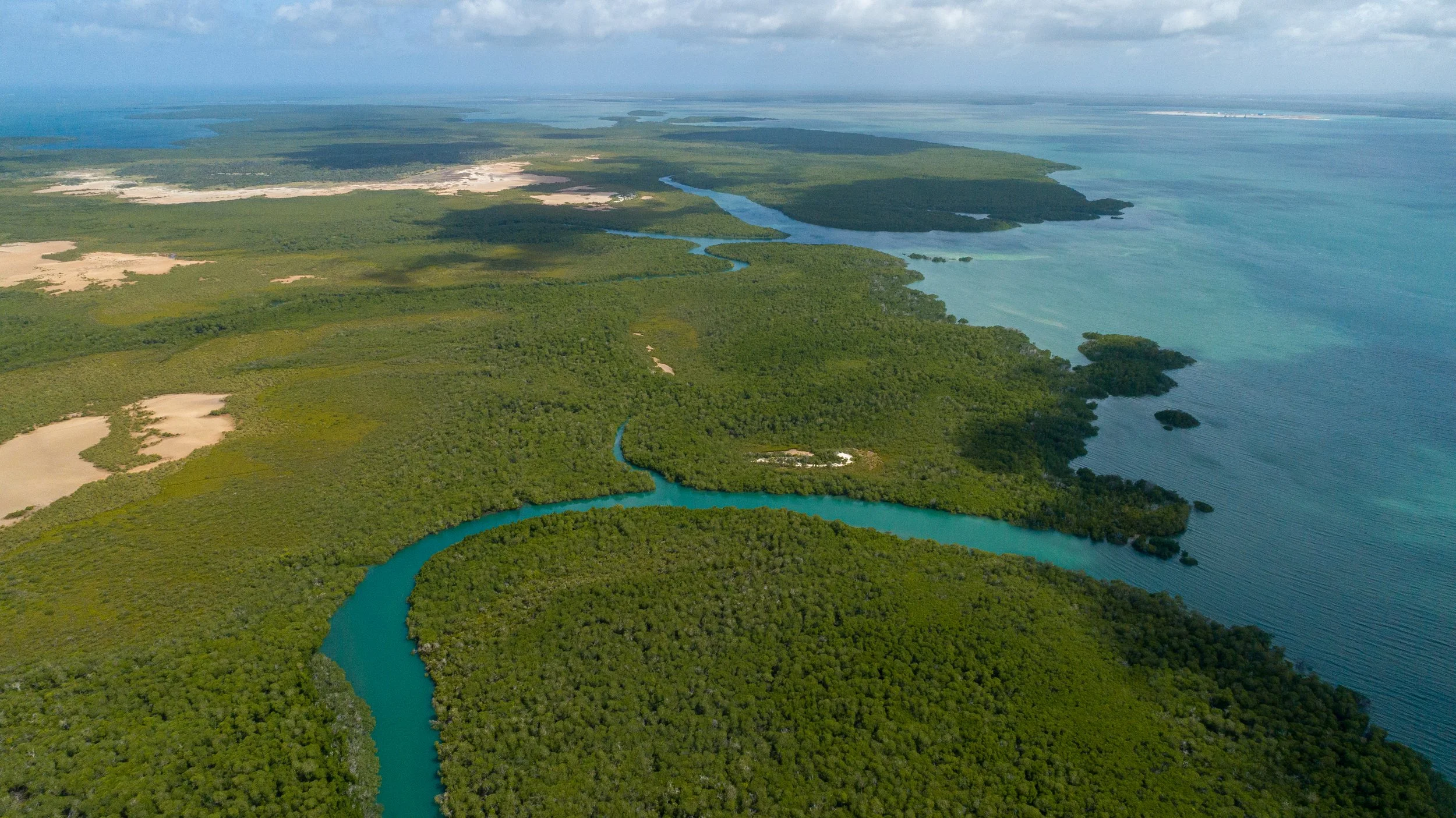NRT Coast continues to transform lives, secure peace, and conserve natural resources along Kenya’s north coast through its core robust Marine Program, which aims to protect habitats, reduce fishing pressure on nearshore areas, provide a community-driven approach to reef restoration, and promote livelihood diversification.
The marine program centres around four member conservancies in Lamu and Tana River Counties. They are Kiunga, Pate, Awer and Lower Tana Delta. The NRT Marine Strategy is available to download here, and sets out the priorities and a road map for the implementation of NRT’s Marine Program over the next few years.
Key marine programs include:
Community Based Sea Turtle Conservation
Since 2016, conservancy scouts have been monitoring sea turtles— • particularly the hawksbill and green—and recording the locations of all turtle sightings and information on turtle carcasses and nests. Conservancy scout data is collected as part of Marine-CoM- MS, a conservancy scout-based monitoring system similar to Wildlife-CoMMS. Poaching, loss of nesting habitat, and netting as by-catch are all threats sea turtle populations face in Kenya.
In 2022, 35 sea turtle nestings were recorded, and 18 sea turtles caught as bycatch were rescued in Kiunga and Pate Conservancies.
Five species of sea-turtles (all classified as endangered or critically endangered) occur in Kenya’s waters with three species known to nest on beaches in NRT member conservancies: green, hawksbill and olive ridley. Loggerhead and leatherback turtles forage and migrate through the area.
Ocean Plastic Collection and Recycling
The Kiunga plastic collection and recycling project is locally known as the ‘Bahari Moja Project’ in which tonnes of plastic debris are collected from the nearby beaches as part of clean-up activities. The Kiunga community has reported increased sea turtle nesting because of the clean beaches.
4.4 tons of plastic waste was collected from the surrounding beaches in Kiunga Community Wildlife Association (KICOWA) in clean-up efforts. This brings the total plastic collected in 2019 to 2022 to 63.2 tons.
Local women’s groups use recycled plastic to make eco bricks for building, as well as crafts to sell.
Artificial Coral Reef Restoration
Pate Marine Community Conservancy (PMCC) launched the Artificial Coral Reef Restoration Project to restore at least 0.5 hectares of reef within Locally Managed Marine Areas (LMMAs), enhancing fisheries, and improving LMMA management.
Between November 2019 and March 2022, conservancy scouts in Kiunga and Pate Conservancies conducted coral reef monitoring surveys in conservation areas, including the locally managed marine areas (LMMAs), to monitor their effectiveness.
Fisheries Co-management
Curbing Use of Destructive Beach Seine Nets
In partnership with The Nature Conservancy (TNC), NRT Coast is currently implementing an Illegal Beach Seine Nets Gear Exchange Program (GEP Program) in Kiunga Community Conservancy, whose aim is to ensure all beach seine nets in the Kiunga Marine National Reserve (KMNR) are voluntarily exited by the end of 2023.
85% of fishers owning illegal beach seine nets in Kiunga Marine National Reserve (KMNR) voluntarily accepted to replace their nets with legal sustainable fishing gears under the Kiunga Gear Exchange Program.
Locally Managed Marine Areas (LLMAs)
The robust NRT Coast Marine Program empowers the fisher community in Pate and Kiunga Community Conservancies to practice sustainable fishing. Over the years, illegal, destructive fishing has resulted in the overexploitation of nearshore reefs, habitat damage, and the decline of nearshore fish populations, negatively impacting the communities’ livelihoods.
To reverse this trend, NRT Coast’s community conservancies have established Locally Managed Marine Areas (LMMAs)—regions in coastal Kenya organized in a way that marine resources are owned and managed by the local coastal communities working in collaboration with NRT, donors, and other partner organizations, and relevant government agencies.
Mangroves
The NRT Coast Conservancies of Pate Marine, Kiunga, and Lower. Tana Delta are characterized by mangroves, beaches and dunes, coral reefs, and the deep waters of the offshore North Kenya Banks.
The mangroves cover 35,000 hectares and include the nine man- grove species found in the Western Indian Ocean as well as the rare Heritiera littoralis. The Lamu Archipelago mangroves alone account for more than 60% of Kenya’s mangrove forests and are • one of the largest mangrove forest stands in East Africa.
95,494 mangroves have been planted in Pate, Kiunga, and Lower Tana Community Conservancies since 2018.
These mangroves combined with the nutrient-rich cold waters are highly productive and have some of the highest densities of fish and crustaceans inshore in Kenya, supporting the fisheries that underpin the local economy.
Key challenges
Illegal logging of mangroves and over-extraction for building and development
Targeted poaching and by-catch of turtles and marine mammals.
Unsustainable, destructive and illegal fishing practices resulting in the over-exploitation of near-shore reefs;, habitat damage and subsequent decline of near-shore fish populations, which has a direct impact on the livelihoods and well-being of fishing communities
Little economic investment into the region hasmeant few employment opportunities for local people or diversification of livelihoods - poor market infrastructure for agriculture and fisheries products is a major constraint to livelihood improvement
Insecurity
How are Community Conservancies Meeting These Challenges?
Establishing Locally Managed Marine Areas (LMMAs)
A Locally Managed Marine Area (LMMA) is an area of nearshore waters and its associated marine resources that is largely or wholly managed by the coastal communities, land-owning groups, partner organizations, and/or collaborative government representatives who reside or are based in the immediate area. An LMMA differs from a Marine Protected Area (MPA) in that LMMAs are characterised by local ownership, use and/or control, and in some areas follows the traditional tenure and management practices of the region. Communities typically set aside at least part of an LMMA as a no-take zone or impose certain gear, species, or seasonal restrictions to allow habitat and resources to recover from fishing pressure, or to sustain or increase fish catch. An LMMA can vary widely in purpose and design; however, two aspects remain constant: a well-defined or designated area, and substantial involvement of communities and/or local governments in decision making and implementation.
MEET AMINA AHMED | A group of fisherwomen took a big leap of faith when they closed off an octopus fishery — a critical source of food and income — for four months. The results showed promise for healthier communities and marine ecosystems.
Strengthening Governance
Improving fisheries governance through Beach Management Units: Beach Management Units (BMUs) are a governance structure that allow for a collaborative approach to fisheries management. They are made up of fishers, fish traders, boat owners, fish processors and other stakeholders who traditionally depend on fisheries activities for their livelihoods. BMUs are governed using the Fisheries Act and the BMU Regulations of 2007, through their internal administrative rules (by-laws) approved by the BMU assembly and the Director of Fisheries. Conservancies act as umbrella institutions bringing together BMUs that operate over a geographic area determined by the conservancy membership, with the chairperson of each BMU sitting on conservancy boards.
Marine conservancies are also conducting fishing gear exchange programmes to encourage an amnesty on illegal fishing gear and promote more sustainable harvesting methods.
Protecting Marine Life
The Pate Marine Community Conservancy reef restoration plan is currently being implemented by the conservancy after members took part in an online coral reef restoration course.
Ranger-based coral reef monitoring surveys are also carried out regularly.
Marine rangers frequently conduct turtle protection patrols and monitor sightings and nests.



